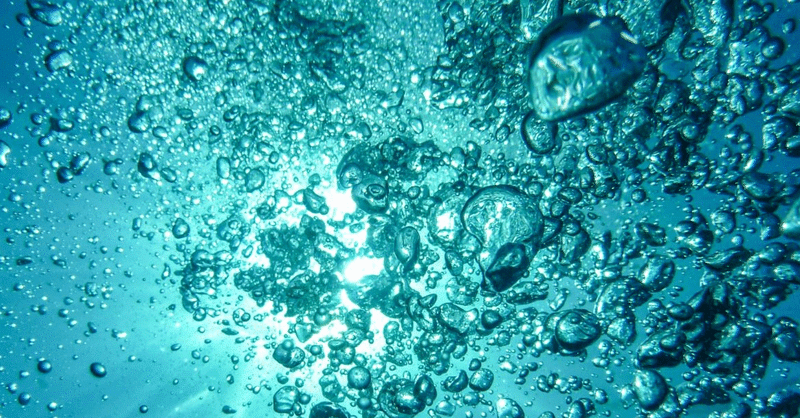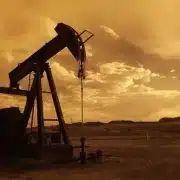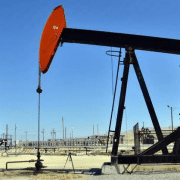⚠️ IMPORTANT LEGAL DISCLAIMER:
The information provided on this page is for general informational purposes only and does not constitute legal, financial, or investment advice. Oil and gas laws, mineral rights regulations, and royalty structures vary significantly by state and jurisdiction. While we strive to provide accurate and up-to-date information, no guarantee is made to that effect, and laws may have changed since publication.
You should consult with a licensed attorney specializing in oil and gas law in your jurisdiction, a qualified financial advisor, or other appropriate professionals before making any decisions based on this material. Neither the author nor the publisher assumes any liability for actions taken in reliance upon the information contained herein.
Land ownership is far more complex than simply holding a title to a piece of property. In many jurisdictions, land rights are divided into surface rights, water rights, and mineral rights. While surface rights govern the use of the land itself, water rights and mineral rights deal with the valuable resources above or below the ground. These rights can be owned together or separately, often creating confusion and disputes.
One of the most pressing legal and environmental issues arises when water rights and mineral rights overlap or conflict. Mining and energy development often require significant water use, while landowners and communities rely on water for agriculture, drinking, and daily living. The tension between these interests has led to legal battles, regulatory challenges, and environmental concerns across the globe.
This article explores the nature of water rights, the scope of mineral rights, and the conflicts that arise when the two collide. It also examines case studies, environmental impacts, and potential solutions for balancing competing needs.
Understanding Water Rights
Water rights determine who can access and use water from rivers, lakes, groundwater, and other sources. These rights are essential for agriculture, municipalities, industries, and households. However, water rights vary dramatically depending on the legal system and geographic region.
In some regions, water is governed under riparian doctrine, where landowners adjacent to a water source have the right to use it reasonably. In other areas, the doctrine of prior appropriation applies, granting rights to those who first put the water to beneficial use. Groundwater access may be regulated separately, often leading to confusion over who has priority when supplies are limited.
Because water is essential for life and community sustainability, disputes over access and allocation are highly sensitive. Any activity that affects water quality or quantity can spark conflict, particularly when tied to mineral extraction.
Understanding Mineral Rights
Mineral rights refer to the ownership and entitlement to extract subsurface resources such as oil, gas, coal, and metals. In many legal systems, mineral rights can be severed from surface rights, meaning a landowner may not automatically control the minerals beneath their land. Instead, another party—such as an energy company, mining corporation, or government agency—may own the mineral rights.
Owners of mineral rights often have the authority to access the surface to extract resources, even if it inconveniences the surface landowner. This principle, known as the dominance of mineral rights, can create tension. Extraction usually requires water for drilling, hydraulic fracturing, or ore processing, putting mineral rights holders at odds with those who hold water rights.
Points of Conflict Between Water and Mineral Rights
Conflicts between water rights and mineral rights typically arise because both resources are vital and often interconnected. Extraction processes consume vast amounts of water, and contamination risks can undermine local water supplies.
Key areas of conflict include:
- Access to water resources: Mining and energy operations may divert water away from agricultural or municipal uses.
- Water contamination: Chemicals and waste from extraction can pollute rivers, aquifers, and lakes.
- Landowner disputes: Surface owners may lose water access or quality due to mineral rights exploitation.
- Regulatory overlap: Multiple agencies may claim jurisdiction, leading to inconsistent enforcement.
These conflicts are often exacerbated by drought, population growth, and increased demand for both energy and water.
Legal Doctrines Governing Conflicts
The resolution of disputes depends heavily on the legal doctrines governing water and mineral rights in a specific region. In many jurisdictions, mineral rights are considered dominant, giving resource extractors wide latitude to use water. However, water law introduces limits, especially when public health and environmental impacts are at stake.
Courts often weigh the reasonableness of water use against the necessity of mineral extraction. Some legal systems require mineral rights holders to minimize harm to water users, while others prioritize resource development as an economic imperative. The lack of uniformity across regions makes conflict resolution complex and often contentious.
Environmental Implications of Conflicts
When mineral development competes with water needs, the environmental stakes are high. Mining and drilling operations can deplete groundwater reserves, reduce river flows, and contaminate aquifers with heavy metals or toxic chemicals. Hydraulic fracturing, for example, has been linked to methane leaks and water quality degradation.
Communities dependent on local water supplies often face the brunt of these environmental consequences. Ecosystems are also at risk, as fish, wildlife, and vegetation rely on clean and consistent water availability. In some cases, long-term damage to aquifers is irreversible, leaving communities without safe water for generations.
Economic Dimensions of the Conflict
Conflicts between water and mineral rights are not just legal or environmental—they are deeply economic. Mineral development generates jobs, tax revenue, and energy resources critical to modern economies. At the same time, agriculture, tourism, and real estate depend heavily on secure and clean water supplies.
When water is diverted to support mineral extraction, agricultural production may decline, food prices can rise, and local economies suffer. Conversely, restricting mineral extraction in favor of water rights can slow industrial growth and reduce energy independence. Balancing these competing economic interests is one of the greatest challenges facing policymakers.
Case Studies of Water and Mineral Rights Conflicts
Across the world, high-profile disputes illustrate the challenges of reconciling water and mineral rights.
In regions rich in shale oil and gas, hydraulic fracturing has sparked debates over water use and contamination. Farmers and ranchers often claim their wells run dry or become polluted due to drilling activities. Lawsuits and community protests highlight the ongoing tension.
In mining regions, operations that require massive water inputs—such as copper or lithium extraction—have drawn criticism for depleting scarce water supplies in arid environments. Local populations, often already facing water shortages, view these practices as unjust and unsustainable.
Such case studies demonstrate that the conflict is not hypothetical but a pressing issue with tangible human and ecological impacts.
The Role of Government Regulation
Governments play a critical role in mediating between water and mineral rights. Regulatory frameworks often require permits for both water use and mineral extraction, setting limits to protect communities and ecosystems. Environmental impact assessments, public hearings, and water quality monitoring are tools used to prevent or mitigate conflicts.
However, regulatory capture—where powerful industries influence decision-making—can undermine these protections. In some regions, governments prioritize energy independence or economic growth over environmental safeguards, leading to intensified conflicts. Effective regulation requires balancing economic development with long-term sustainability and fairness.
Indigenous and Community Rights
Indigenous groups and rural communities are frequently at the forefront of water versus mineral rights disputes. For many, water is not just a resource but a cultural and spiritual necessity. Mineral extraction on or near traditional lands can threaten both livelihoods and heritage.
Legal battles over indigenous water rights highlight broader questions of justice, sovereignty, and equity. Some communities have successfully asserted their rights, while others continue to struggle against powerful corporations and governments. Recognizing community rights and involving local populations in decision-making is essential for resolving conflicts fairly.
Technological Approaches to Reducing Conflicts
Innovation offers potential pathways to reducing tension between water and mineral rights. New mining technologies that recycle water, reduce waste, or rely on alternative extraction methods can minimize impacts. Advanced water treatment and desalination systems may also help offset water scarcity caused by mineral operations.
Blockchain technology is being explored for transparent tracking of water and mineral usage, ensuring accountability. Remote sensing and artificial intelligence can monitor water quality in real time, providing early warnings of contamination. While technology cannot eliminate all conflicts, it can mitigate their intensity and improve management.
Policy Recommendations for Balancing Rights
To prevent and resolve conflicts, policymakers must take proactive steps. Possible measures include:
- Establishing clear priority frameworks that balance essential water needs with mineral development.
- Enforcing strong environmental protections and penalties for contamination.
- Promoting collaboration between landowners, companies, and communities.
- Encouraging the use of water-efficient extraction technologies.
- Recognizing indigenous and community water rights within legal frameworks.
A combination of strong regulation, technological innovation, and inclusive governance is necessary to achieve sustainable outcomes.
Future Outlook on Water and Mineral Rights Conflicts
As global demand for energy and minerals continues to rise, and climate change exacerbates water scarcity, conflicts between water and mineral rights are likely to intensify. Emerging sectors such as renewable energy may shift the focus toward resources like lithium and cobalt, which also require significant water for extraction.
At the same time, growing awareness of sustainability and human rights is pushing governments and corporations to consider long-term impacts. International cooperation, new legal doctrines, and corporate responsibility initiatives will shape how these conflicts evolve. The future may bring more equitable frameworks, but achieving balance will require persistent effort.
Conflicts between water rights and mineral rights highlight the complex intersection of law, economics, environment, and human rights. Water is essential for life, while minerals fuel modern economies, yet their competing demands create tension across communities and industries.
Blockchain, new technologies, and improved regulatory frameworks hold promise, but lasting solutions require fairness, transparency, and respect for all stakeholders. As the global community navigates the twin challenges of resource demand and environmental protection, balancing water rights with mineral rights will remain one of the defining issues of our time.











